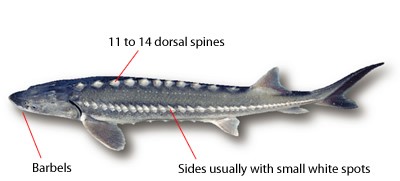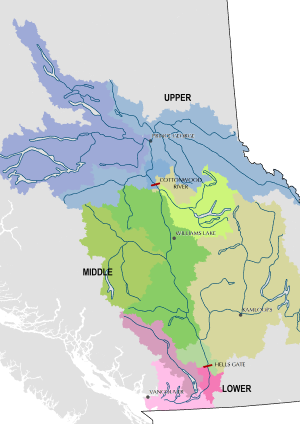B.C. Fraser River White Sturgeon Plan
The Fraser River is home to one of the largest and oldest-lived fish in the world, the White Sturgeon. Unfortunately, land conversion and habitat loss, predation and fishing pressures are challenges to White Sturgeon populations.
On this page
- Preserving White Sturgeon populations
- White Sturgeon First Nations cultural importance
- Recreational fishing
Preserving White Sturgeon populations in the Fraser River
In 2021, the Province embarked on a basin-wide White Sturgeon engagement planning process with a Provincial and First Nations co-led Steering Committee and the inclusion of Department of Fisheries and Oceans (DFO). This process is a step toward collaborative and inclusive management and governance of sturgeon in the Fraser River.
The B.C. Fraser River White Sturgeon Plan will reflect input from First Nations, DFO, British Columbia and stakeholders and will include Indigenous knowledge and incorporate current Species at Risk recovery plans. The plan will review the state of knowledge (science and Indigenous), threats to sturgeon populations, and explore recommendations for actions.
The plan will divide the Fraser River into three areas:
- Lower Fraser: 0 to 211 km (includes the Pitt River and Harrison River watersheds)
- Middle Fraser: 211 to 670 km upstream
- Upper Fraser: 790 to 1,100 km upstream (includes the Nechako River)
Specific decisions will require further engagement and consultation separate from this planning process. The Province will work with rights holding First Nations to identify paths to co-management, devolution and governance to ensure Fraser River White Sturgeon are cared for now and in the future. Learn more about White Sturgeon in the Lower Fraser River.
White Sturgeon First Nations cultural importance
Sturgeon have been important as a food source and for their cultural significance. Available in the Fraser River throughout the year, sturgeon kept people alive in winter months when other species of fish were less abundant. Sturgeon were used for medicinal purposes with their meat and spinal cord burnt in offering to ancestors in the spirit world. Sturgeon are depicted as beings that care for the departed and provide various traditional teachings. Four communities have origin stories associated with White Sturgeon (LFFA 2017).
In 1994, First Nations instigated a voluntary moratorium on sturgeon harvest due to concerns about the population after a large adult mortality event.

Fishing for White Sturgeon in B.C.
In 1994, the harvest fishery was closed and replaced with a catch-and-release fishery. Any person fishing for White Sturgeon must possess a valid BC Freshwater Fishing Licence and a White Sturgeon Conservation Licence for fishing upstream of the tidal zone and must adhere to fishing regulations.
Report a dead sturgeon sighting within British Columbia. Reporting a find will help biologists track and investigate the carcass.
Information can be entered on the website, including a map location and photos. Please do not move the carcass.

Got a PIT tag number?
Track a tagged White Sturgeon online
Visit our Freshwater Fish page to learn more about the White Sturgeon and its life history.

Fishing for White Sturgeon
Subscribe
Enter your email address to subscribe to updates of this page.

